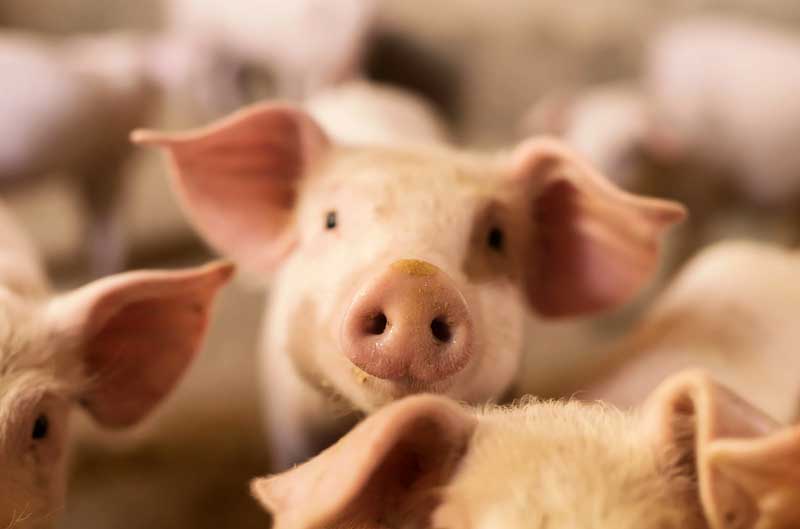The use of animal models for the research of post-operative pain (POP) has been well described[1]. Most POP studies that have been performed to date used male rodents following plantar incision and focusing on the withdrawal response from a noxious thermal, chemical, or mechanical stimulus[2]. Although rodent models have contributed significantly to our understanding of surgical pain over the years and have the added advantage of being readily available for anatomic manipulation, there are some significant limitations, especially for assessing local therapies. For example, rodent skin structure[3], innervation[4-6] and penetration[7] is very different from human cutaneous tissue. Despite major efforts to evaluate spontaneous changes in rodents, [8] such as facial recognition and grimace scale,[9] dynamic weight bearing [10] and heat gradient place preference, [8,11] pain status is still predominantly evaluated using the withdrawal response method [12]. In contrast to the rodent, there are striking similarities between pig and human skin structure in terms of general structure, thickness, hair follicle content, pigmentation, collagen and lipid composition [13]. Indeed, pigs have been used for many years for the study of skin penetration with topical therapies because of the high prediction of permeability compared to humans [7]. The pig model for post-operative pain (POP) is therefore a rational choice.
It has been suggested in our previously published studies, as well as in studies from other researchers, that the pig POP model allows for better translation to humans [14-18]. However, even porcine skin incision (SI) [19], skin muscle/incision retraction (SMIR) [14] and pararectal laperoctomy (PL) [20] models have limitations. Due to their propensity for rapid weight gain and growth, only very young domestic pigs (approximately 6-8 weeks old) can be used in the POP models; [14] hence, studying chronic conditions using domestic pigs is extremely difficult if not impossible. In addition, standardization of domestic pig models is challenging due to strain variations [21]. An incisional POP model using the Göttingen minipig might overcome these latter limitations with domestic pigs. Göttingen minipigs have been inbred to gain weight slowly, which in contrast to domestic pigs, allows studies to be conducted using adult animals [22]. For this reason, Göttingen minipigs are considered the gold standard for pharmacology and toxicology studies [22-24], as well as for skin permeability [25] and pharmacokinetic studies [26].
Our recent publication describes the characterization of a Göttingen minipig model of post-operative incisional pain.
Three behavior tests were applied in this study, including the von Frey test for sensitivity to mechanical stimuli, human approach test (HAT) for changes in spontaneous behavior, and open field test for assessment of locomotor function.
The open field test is commonly used in animal studies to assess locomotor and behavior changes following perineural injection, and can be correlated with locomotor function.
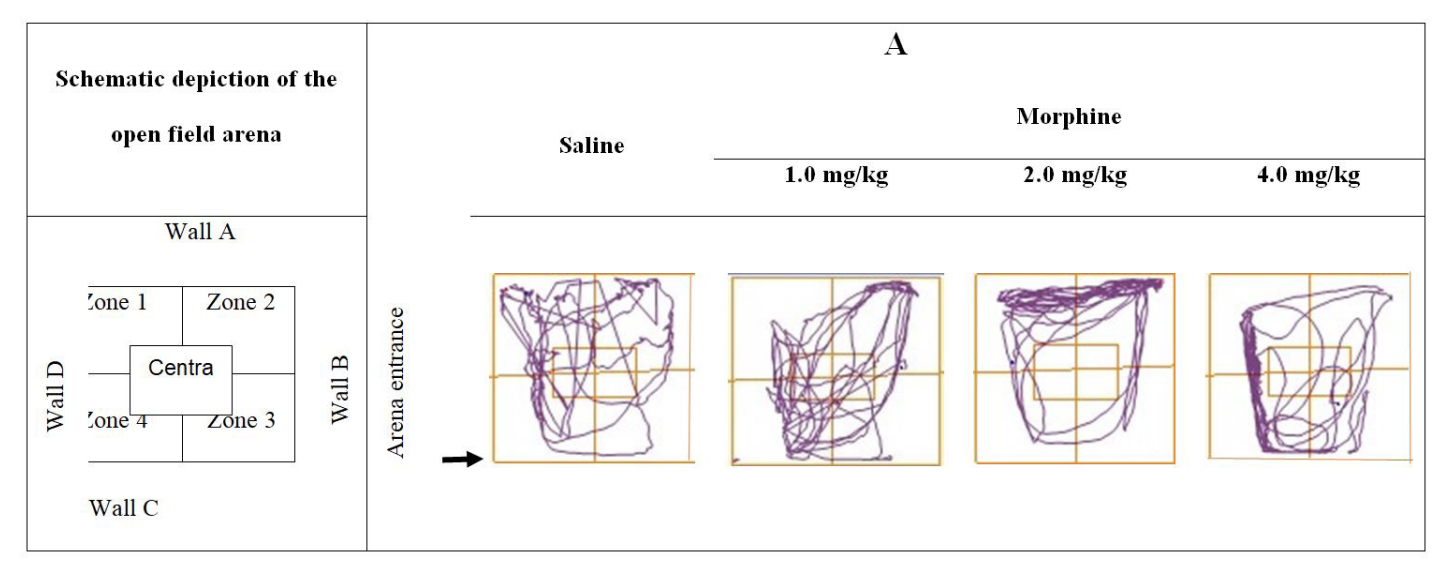
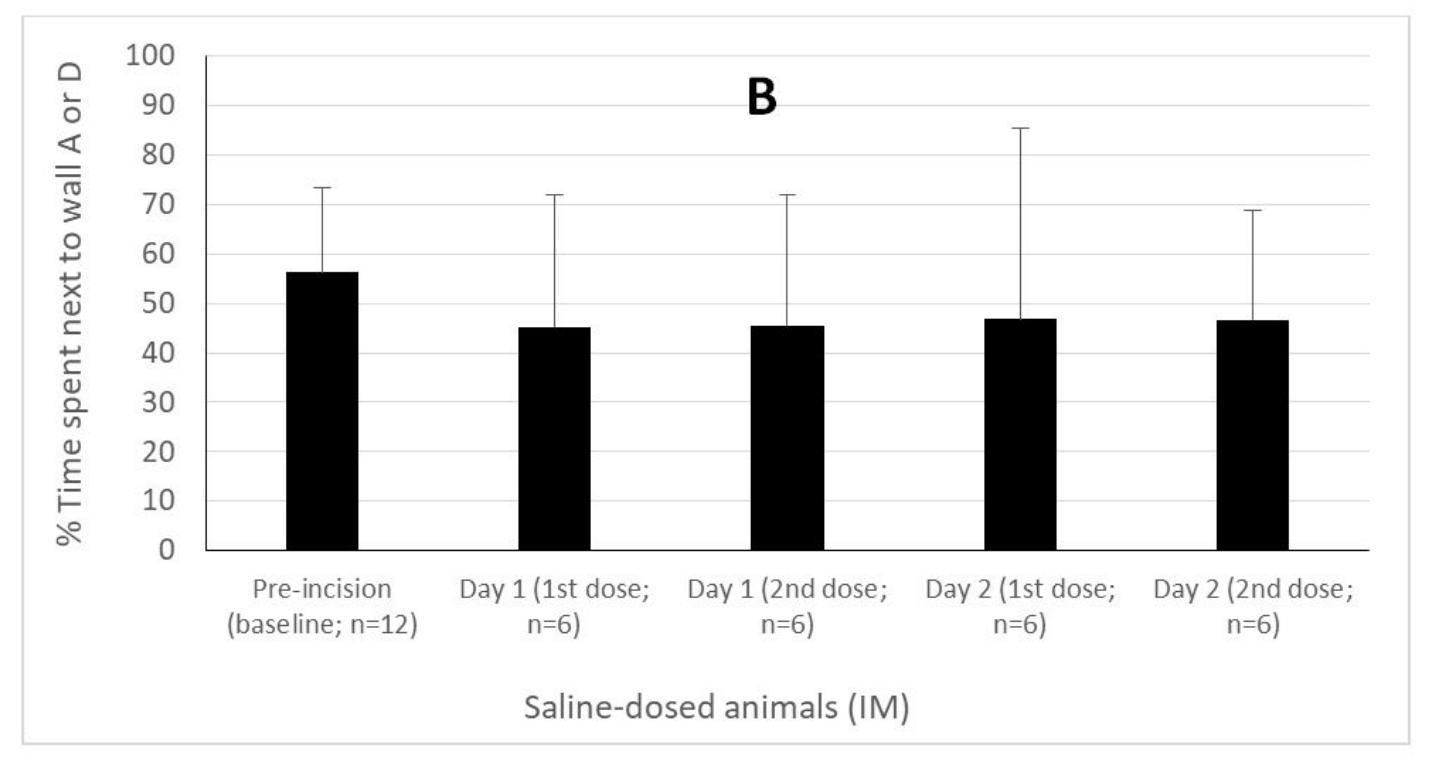
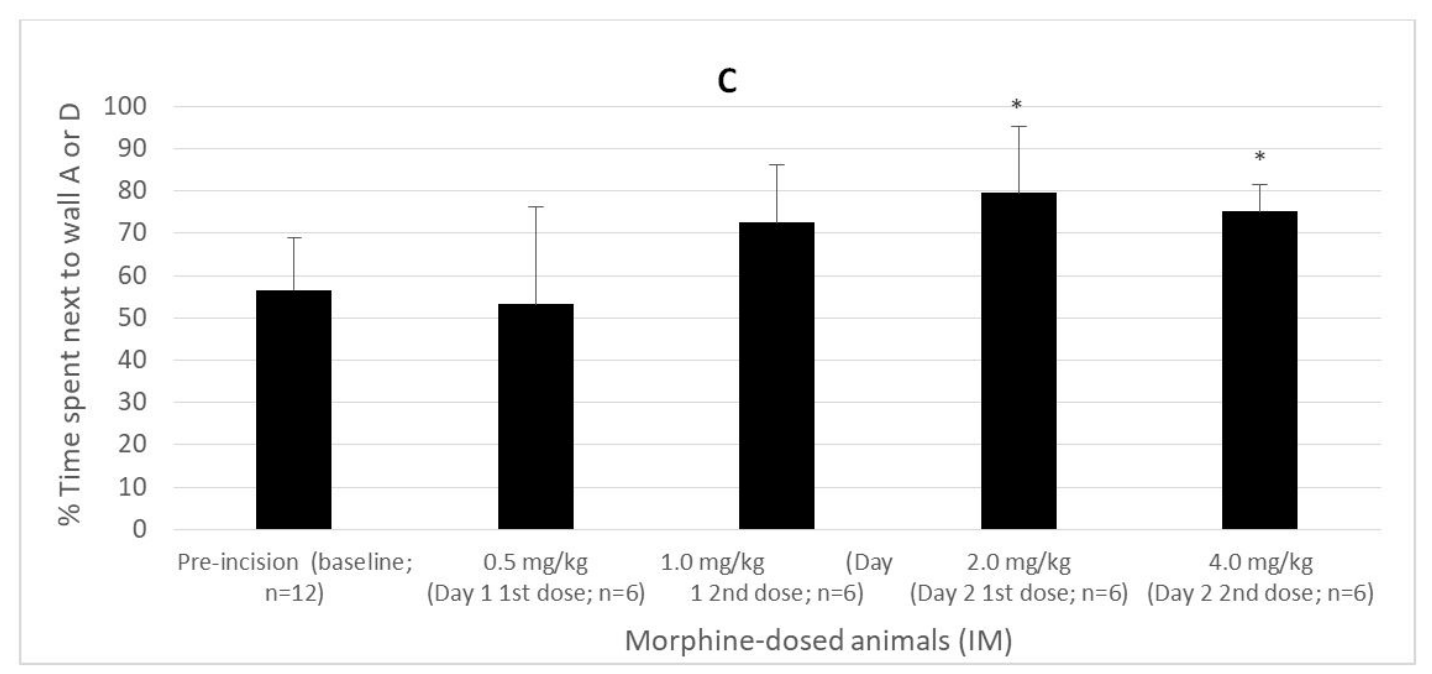
Figures A-C: Effect of systemic treatment with positive control on locomotor function (a) Walking pattern post-incision (0.5 hours post IM injection); (b) time spent next to wall A or D (saline dosed IM group); and (c) time spent next to wall A or D (positive control dosed IM group). Results are reported as mean±SD. *p<0.05 vs. saline dosed animals. SD: standard deviation.
IENF is widely used as diagnostic tool in human patients as well as in animal models of peripheral neuropathy [29,30]. IENF are directly associated with functional innervations of the skin. In patients with sensory neuropathy, the IENF density is consistently and significantly lower than that in healthy controls. To quantify the IENF density in the pig, we carried out an immunodetection of the PGP 9.5 antigen in cryosectioned skin samples. IENF density was higher in the unoperated hind leg than in the unoperated flank (4.8±1.3 nerve ending/mm2 vs. 3.4±1.4 nerve ending/mm2, respectively; p<0.05).
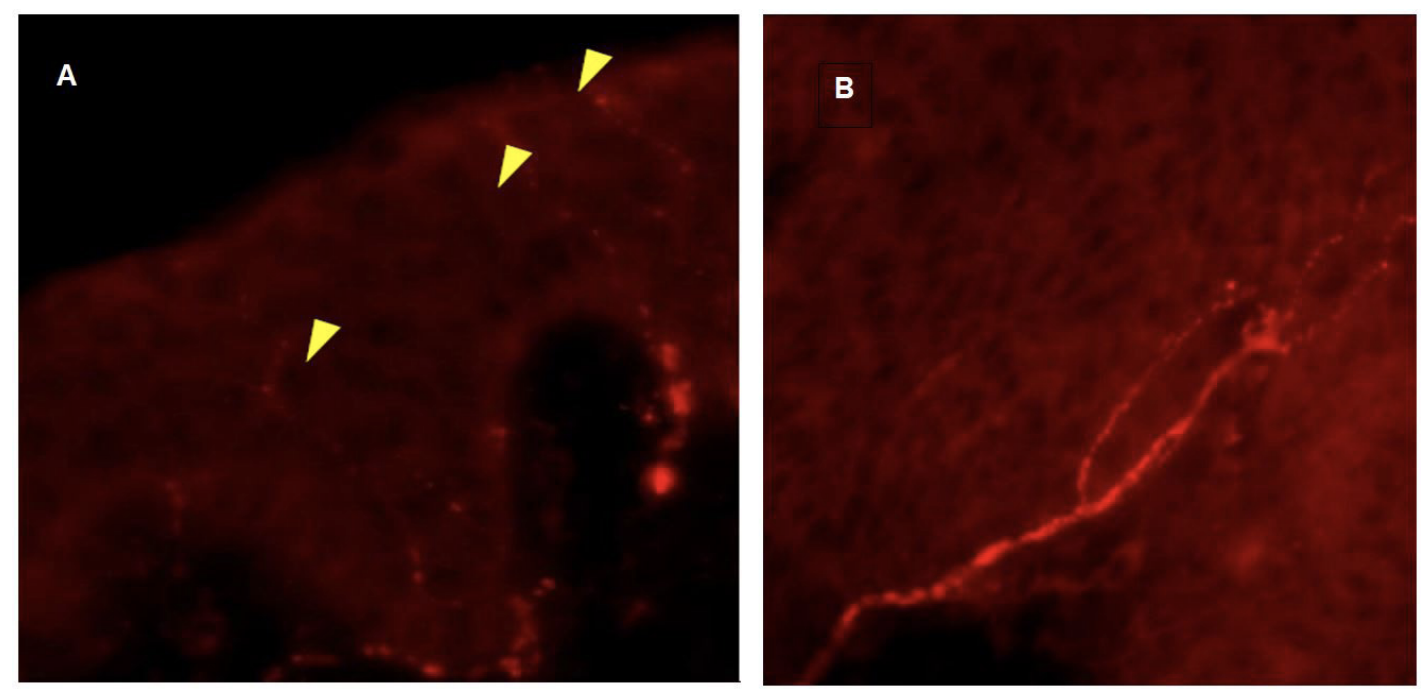
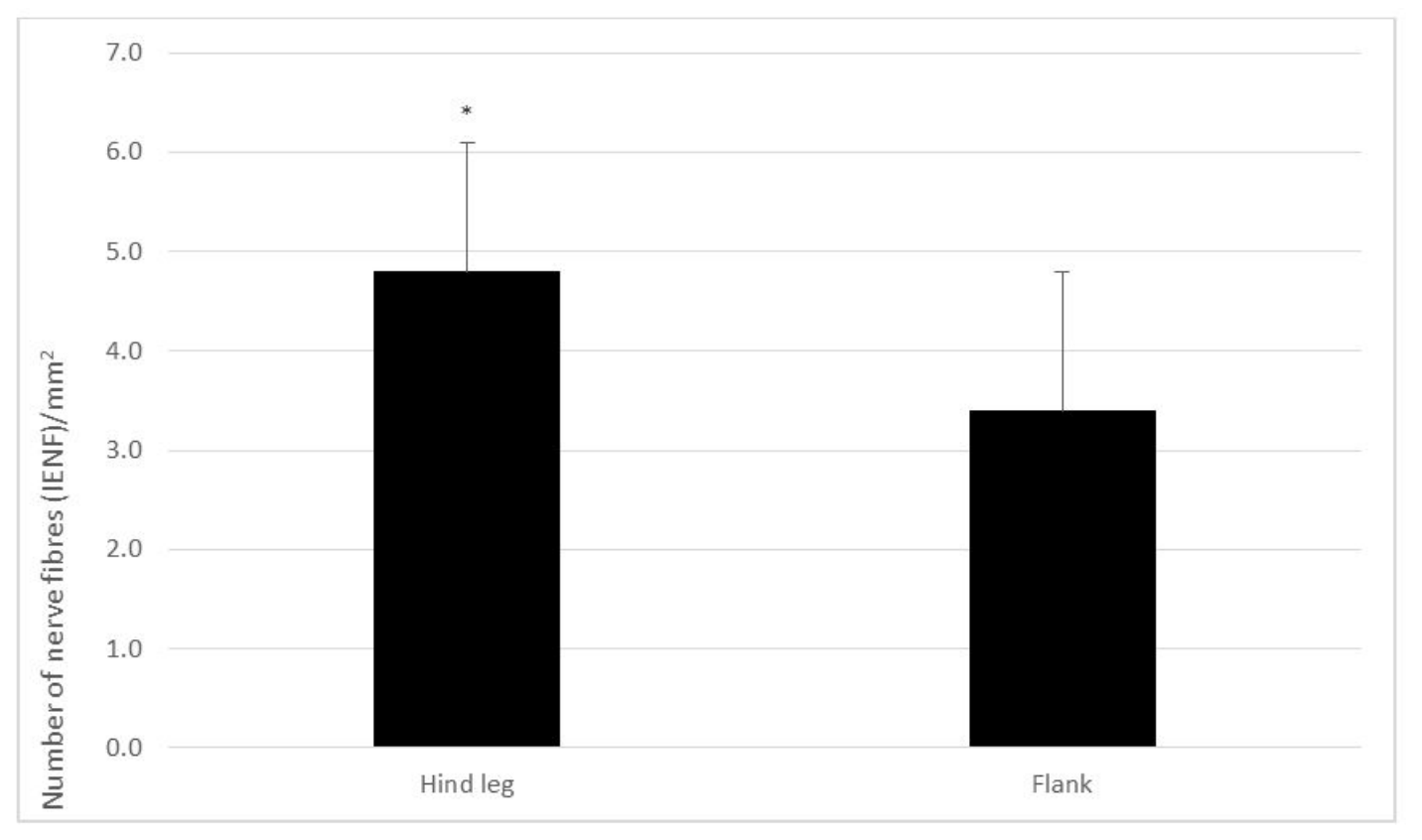
Figures: Results of the intraepidermal nerve fiber (IENF) density analysis (a) Representative image showing immunodetection of the PGP 9.5 antigen in flank, (b) representative image showing immunodetection of the PGP 9.5 antigen in hind leg, and (c) mean±SD IENF recorded in hind leg vs. flank region. Yellow arrows indicate PGP9.5 positive intraepidermal nerve fibres. *p<0.05 IENF in the hind leg vs. flank region. IENF: intraepidermal nerve fiber.
Conclusion
The validation of this model demonstrates for the first time that changes in spontaneous pain-like behavior of the minipigs can be monitored post-incision. Furthermore, we suggest that the higher IENF density found in the hind leg compared to the flank region of the minipigs may result in increased sensitivity to mechanical stimuli post-incision.
Want to discuss translational pig models and how your preclinical development program can benefit from including studies prior to clinical trials?

This post is an excerpt from our January 2021 publication: Validation of a Gottingen Minipig Model of Post-Operative Incisional Pain. To view the complete publication as well as references included, please click here.
